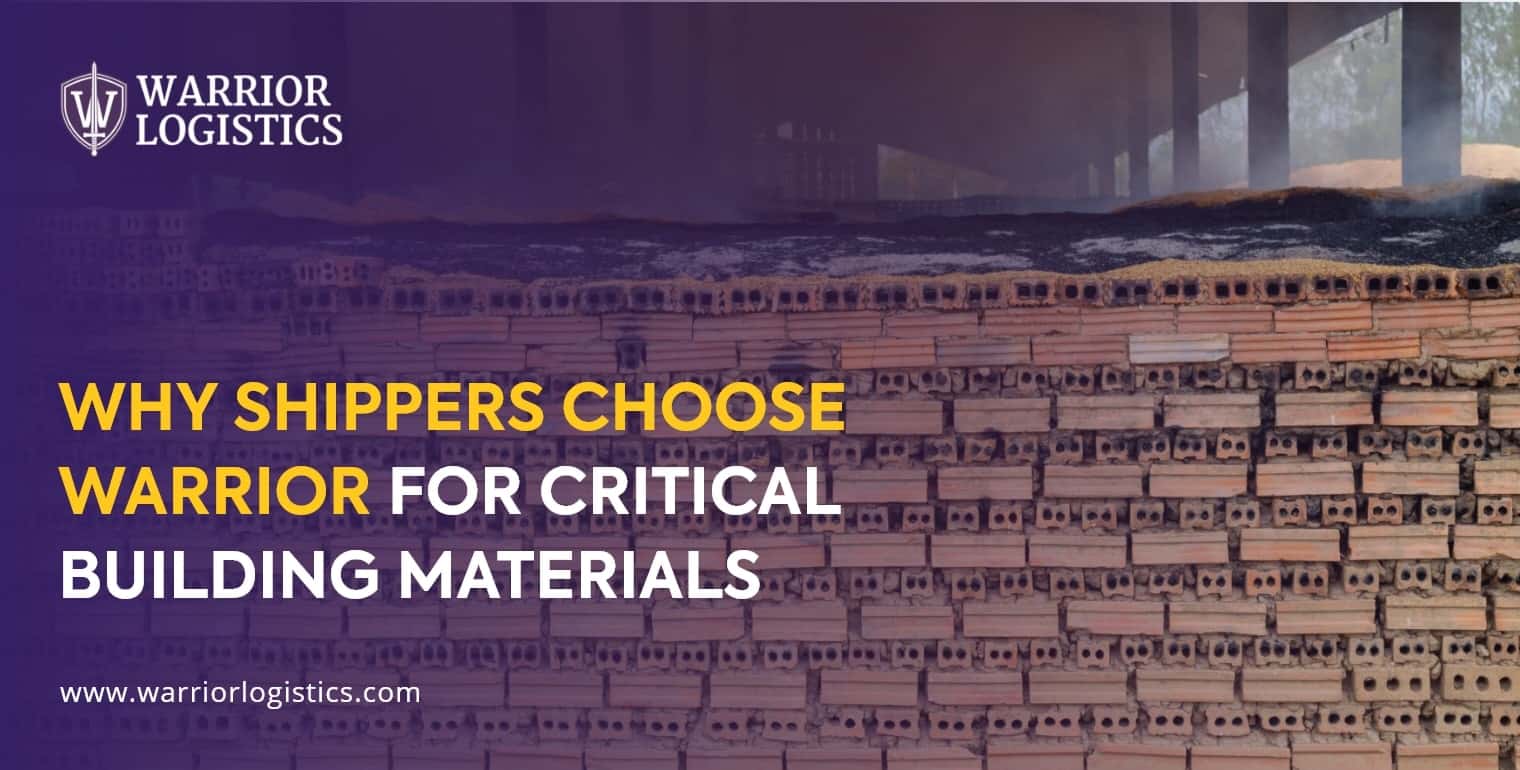Freight Class Explained: What It Means and Why It Matters
Freight classification may sound like a small detail in the world of logistics, but it has a significant impact on everything from shipping rates to delivery timelines. Whether you’re moving a few pallets of building materials or coordinating regular LTL shipments across the country, understanding freight class is essential.
At Warrior Logistics, we treat freight classification not as a checkbox, but as a strategy. It’s how we ensure every load moves with precision, reliability, and transparency.
What Is Freight Class?
Let’s start with the basics: What is freight class? Simply put, freight class is a standardized system used in the United States to categorize shipments based on specific characteristics.
Managed by the National Motor Freight Traffic Association (NMFTA), freight classification uses a numeric scale from 50 to 500 to determine how easily an item can be handled, stored, and transported.
Each freight shipping class is determined by four factors: Density, Stowability, Handling, and Liability. These are combined to assign a freight class code, which directly impacts the cost of shipping your cargo. Contact freight brokers to learn more about freight class, and get your book hassle-free shipping.
Understanding freight class meaning is crucial for every shipper because misclassification can lead to surprise costs, rejected pickups, and delayed deliveries. In the world of supply chain operations, small details like freight class can make or break efficiency.
Why Freight Class Matters in Shipping
You might be wondering: What does freight class mean for my day-to-day operations?
For one, it affects the rate you’ll pay for transporting your goods. Lower-numbered classes (like 50 or 55) typically apply to dense, heavy items that are easy to stack and transport. Higher-numbered classes (like 400 or 500) cover lightweight or irregularly shaped items that are harder to handle or more prone to damage.
Incorrect freight classification often leads to reclassification by carriers, which brings added fees and unnecessary delays. That’s why Warrior Logistics double-checks every shipment before it moves.
We don’t rely on guesswork. We engineer strategies.
Understanding the Freight Class Chart
The freight class chart is the ultimate reference for shippers. It lists commodity types along with their respective freight class codes, based on NMFC guidelines.
For example:
- Steel coils: Class 55
- Sheet metal: Class 70
- Machinery: Class 85 to 125
Using the correct freight class chart ensures that your shipment aligns with industry regulations and helps prevent unnecessary disputes with carriers.
The Warrior freight forwarders team is trained to read, interpret, and apply these classifications accurately, no matter how specialized your freight may be.
What Determines Cargo Class?
Four factors determine cargo class and thus your freight classification:
- Density: Weight divided by volume. The denser the item, the lower the freight class.
- Stowability: How easily the item fits into a trailer with other freight. Irregular or hazardous items may be harder to stow.
- Handling: Items that require special care or equipment increase in freight class.
- Liability: Fragile or high-value items are riskier to ship and often fall into higher classes.
Failing to consider any of these can result in your freight being reclassified by the carrier, adding time and cost to your shipment.
Also Read: Difference Between 3PL vs 4PL
Freight Class Codes Breakdown
Every shipment falls under a specific freight class code that dictates how it’s handled and priced.
Here’s how the numeric system breaks down:
- Class 50: Very dense, durable items like bricks or steel rods
- Class 70-100: Mid-density items such as furniture, building materials, or machinery
- Class 150-500: Lightweight, bulky, or fragile items
Freight moving at freight class 60 is going to be far more cost-efficient than freight rated at freight class 300, even if they take up the same space. With Warrior Logistics, you won’t just get a classification; we’ll help you understand the strategy behind it.
Common Freight Class Mistakes and How to Avoid Them
Even experienced shippers can make costly errors when it comes to freight shipping class. Here are a few we frequently see:
- Misjudging dimensions or weight, leading to an incorrect cargo class
- Choosing a freight class based on a similar product instead of the actual NMFC code
- Ignoring packaging when calculating density
Our team prevents these pitfalls through careful planning, thorough documentation, and advanced freight engineering tools.
Also Read: Fleet Management Cost Analysis
Warrior Logistics’ Approach to Freight Classification
At Warrior Logistics, we don’t leave freight classification to chance. We engineer each route, vet every carrier, and ensure all certifications are current.
That’s part of how we go F.A.R.:
- Flexibility in adapting classification strategies to complex freight types
- Availability of real-time data and documentation
- Reliability in pricing accuracy, planning, and carrier execution
Our approach turns freight class into a tool, not a risk.
Freight Class Isn’t Just a Number. It’s a Strategy
Still asking yourself, what is freight class, and why does it matter? It’s simple: shipping smart starts with shipping right. Freight classification directly affects your rates, your compliance, and your reputation.
By applying Warrior’s standards and systems, you can avoid penalties, reduce friction with carriers, and move your freight with confidence.
FAQs About Freight Class
What is freight class, and why does it affect shipping cost?
Freight class is a standardized way of grouping shipments based on their shipping difficulty. It affects your shipping cost because lower classes are cheaper to transport, while higher classes cost more.
What does freight class mean in LTL shipping?
In LTL shipping, freight class determines how a carrier prices, handles, and stores your freight. It’s one of the most important factors in rate quotes.
How do I know what shipping class my item falls into?
You can calculate the density of your freight and consult the freight class chart, or partner with a logistics provider like Warrior, which handles this process for you.
What happens if I use the wrong freight class code?
Carriers may reclassify your freight and charge additional fees. Misclassification also risks delays and compliance issues.
Can two similar products have different freight shipping classes?
Yes. Even slight differences in packaging, density, or fragility can place products in different freight shipping class categories.
What is the purpose of the NMFC freight classification system?
It ensures consistency across the freight industry by creating uniform rules and pricing structures for different types of goods.
Why should I trust Warrior Logistics with freight classification?
Because we don’t guess, we engineer. We align every classification with carrier standards and optimize for cost, safety, and speed.
Need help decoding your freight class? Let Warrior Logistics engineer your next shipment with precision, clarity, and confidence.
Let’s move smarter. Let’s move with precision. Let’s move with Warrior. Contact us today!




